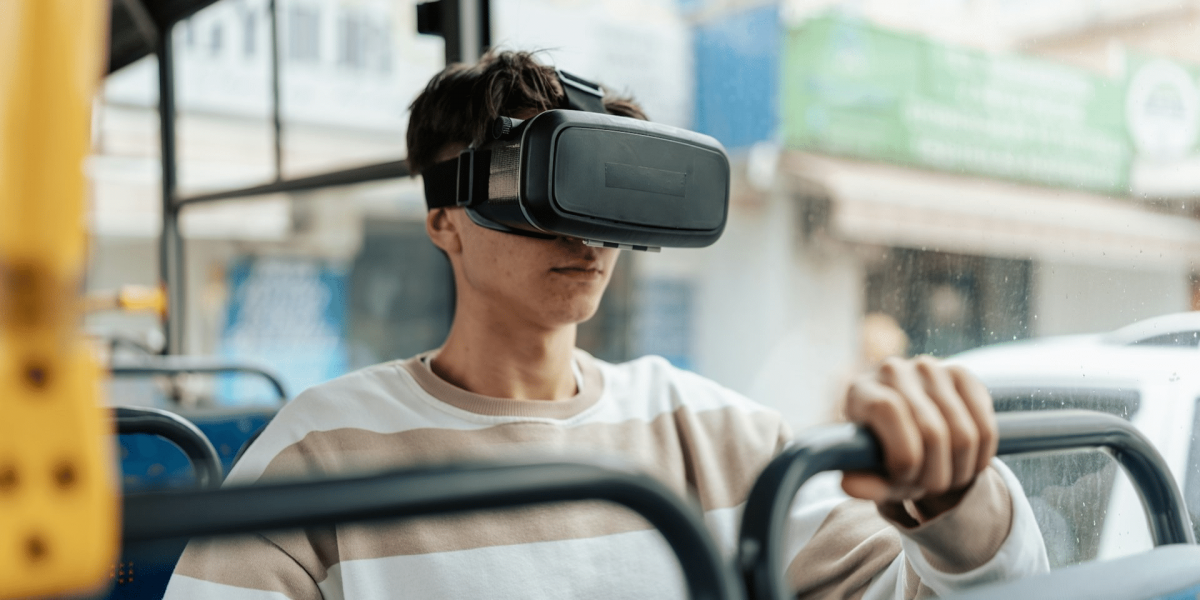In a city as dense and fast-paced as New York, transportation is a critical component of daily life. With millions of residents and tourists relying on public transit each day, the Big Apple faces the dual challenges of congestion and the need for more sustainable transportation solutions. In recent years, the concept of “smart buses” has emerged as a potential game-changer for urban mobility. These high-tech, data-driven buses promise to improve efficiency, reduce traffic congestion, and enhance the overall public transportation experience. But the question remains: are smart buses viable in New York City?
This article explores the feasibility of smart buses in New York City, considering the technological aspects, infrastructure requirements, and potential benefits and challenges of their implementation.
What Are Smart Buses?
Smart buses are essentially public transportation vehicles equipped with advanced technologies that improve their functionality, efficiency, and interaction with the surrounding environment. These buses are integrated with a variety of systems such as GPS tracking, real-time data collection, automated scheduling, and even autonomous driving features. The primary goal is to create a seamless and efficient travel experience for passengers while optimizing routes, minimizing delays, and improving safety.
Some common features of smart buses include:
- Real-Time Tracking and Passenger Information: Smart buses use GPS to provide real-time location updates, allowing passengers to track buses and plan their journeys more effectively.
- Data-Driven Route Optimization: By collecting and analyzing data from passengers and traffic conditions, smart buses can adjust their routes to avoid congestion and ensure faster travel times.
- Autonomous Capabilities: Some smart buses are designed with self-driving technology, which reduces the need for human drivers and can increase operational efficiency.
- Eco-Friendly Features: Many smart buses are electric or hybrid vehicles, reducing the carbon footprint of the city’s transit system.
- Smart Ticketing Systems: Passengers can use mobile apps or contactless cards to pay for their rides, streamlining the ticketing process and reducing delays.
As New York City looks for ways to modernize its transit network, the idea of introducing smart buses has sparked considerable interest.
The Current State of Public Transportation in New York
New York City’s public transportation system, primarily operated by the Metropolitan Transportation Authority (MTA), is one of the largest and most complex in the world. The city’s extensive bus network serves millions of riders daily, spanning across all five boroughs. However, despite its size and reach, the MTA faces numerous challenges, including overcrowding, delays, outdated infrastructure, and growing demand for more sustainable solutions.
The city’s bus system in particular struggles with traffic congestion, which significantly hampers the efficiency of bus routes. Many buses are caught in the same traffic jams as private vehicles, leading to delays and unreliable schedules. The introduction of smart buses could potentially address these issues, offering a more modern, responsive, and user-friendly service.
However, given the complexities of New York’s transportation landscape, the question of whether smart buses can thrive in such an environment is not straightforward.
Technological Feasibility of Smart Buses in NYC
One of the primary hurdles in adopting smart buses in New York is the city’s existing infrastructure. While New York is home to cutting-edge technology in many industries, its public transportation system is often seen as outdated. Integrating smart bus systems into the city’s dense network of roads, subway stations, and existing bus routes presents several challenges.
1. Route Optimization and Traffic Integration
Smart buses rely heavily on data to optimize routes and avoid traffic congestion. However, New York’s streets are notoriously congested, and traffic patterns can be unpredictable. The challenge for smart buses will be integrating real-time traffic data with sophisticated algorithms that can adjust routes dynamically without disrupting the overall flow of the city’s transportation system.
In cities like San Francisco or Seattle, smart buses are often implemented in less crowded environments with clearer roads, making route optimization more straightforward. In contrast, New York’s bus routes traverse some of the world’s most congested streets, where even the best data-driven algorithms may struggle to predict or bypass traffic snarls effectively.
2. Infrastructure Requirements
To fully support the deployment of smart buses, New York would need to invest in the necessary infrastructure. This could include installing sensors, smart traffic lights, and enhanced Wi-Fi capabilities to allow buses to communicate with the city’s broader transportation system. Moreover, the city would need to update existing bus stops with digital displays that provide real-time bus information to passengers.
Although New York has started adopting some smart city initiatives, such as smart traffic lights and wireless networks, the overall infrastructure may need significant upgrades to support the seamless integration of smart buses across the city.
3. Autonomous Bus Technology
While some smart buses are autonomous or semi-autonomous, the issue of self-driving vehicles in a bustling, unpredictable environment like New York remains contentious. Autonomous buses would need to navigate not just traffic but also pedestrians, cyclists, and other obstacles unique to city life. Though self-driving technology has made impressive strides in recent years, the safety concerns and regulatory hurdles associated with fully autonomous buses in a high-density urban environment could delay their widespread adoption.
The complexity of implementing autonomous vehicles in New York is compounded by the city’s dense and diverse population. Ensuring the safety of passengers, pedestrians, and other road users while maintaining efficient service would require rigorous testing and adaptation to urban conditions.
Environmental and Operational Benefits
Despite these challenges, the potential benefits of smart buses in New York are significant, especially from an environmental and operational perspective.
1. Reduced Emissions and Sustainability
New York has made substantial commitments to combat climate change and reduce its carbon footprint. Smart buses, especially electric or hybrid models, could significantly contribute to these goals by replacing older diesel-powered buses. Electric buses produce fewer emissions, reduce air pollution, and contribute to the city’s broader sustainability objectives. By making the transition to electric smart buses, New York could move closer to its goal of achieving carbon neutrality.
2. Efficiency and Cost Savings
Smart buses are designed to operate more efficiently, which could lead to reduced operating costs for New York’s transit authorities. By optimizing routes, improving fuel efficiency, and reducing the need for human drivers in autonomous models, smart buses could help cut down on expenses related to labor and maintenance. Additionally, improved reliability and reduced delays would likely result in a better experience for commuters, potentially increasing ridership and revenue.
3. Improved Commuter Experience
For New Yorkers, the primary appeal of smart buses would be the enhanced convenience and ease of use. Real-time tracking, seamless payment systems, and more accurate schedules would make commuting more predictable and less stressful. Moreover, the ability to track buses and adjust travel plans accordingly could make public transit more accessible, especially for individuals with disabilities or those unfamiliar with the city’s transit routes.
Challenges to Widespread Adoption
While the potential benefits of smart buses are clear, there are several hurdles that must be overcome to ensure their success in New York City.
1. Cost of Implementation
The cost of transitioning to a smart bus system would be considerable. This includes the purchase of new buses, the installation of necessary infrastructure, and the integration of advanced technologies into the city’s existing transit network. The MTA would likely need to secure significant funding from both public and private sources to cover these costs, which could delay or complicate the roll-out of smart buses.
2. Public Perception and Acceptance
Public transportation in New York has long been a topic of debate, and some residents may be hesitant to embrace the idea of smart buses, particularly autonomous ones. Concerns about safety, privacy, and the potential for job losses among bus drivers could lead to resistance from some communities. Public engagement and education will be crucial to ensure broad support for the initiative.
Smart buses hold significant promise for improving New York City’s public transportation system. From reducing traffic congestion to enhancing the commuter experience and supporting sustainability goals, smart buses could transform how New Yorkers move through the city. However, the technological challenges, infrastructure costs, and public acceptance remain significant barriers to widespread implementation.
While the idea of smart buses in New York is exciting, it is likely to be a gradual process. In the coming years, pilot programs and incremental advancements in technology could pave the way for a more integrated and smarter transit system. For now, New York will continue to explore the possibilities, weighing the benefits against the costs and challenges of making smart buses a reality in the Big Apple.

















